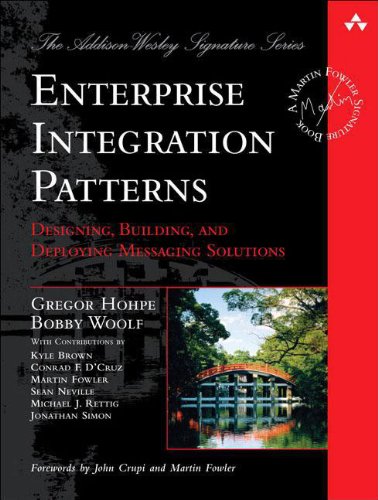Enterprise Integration Patterns: Designing, Building, and Deploying Messaging Solutions epub
Par bailey james le lundi, août 1 2016, 12:51 - Lien permanent
Enterprise Integration Patterns: Designing, Building, and Deploying Messaging Solutions by Frank Leymann


Enterprise Integration Patterns: Designing, Building, and Deploying Messaging Solutions Frank Leymann ebook
ISBN: 0130217530,
Page: 574
Format: pdf
Publisher: Prentice Hall
À�Enterprise Integration Patterns: Designing, Building, and Deploying Messaging Solutions--企业集成模式:设计、构建及部署消息传递解决方案》. Long time since I wrote any blog.. À�Enterprise Integration Patterns: Designing, Building, and Deploying Messaging Solutions--企业集成模式:设计、构建及部署消息传递解决方案》 3. Spring Integration's primary goal is to provide a simple model for building enterprise integration solutions while maintaining the separation of concerns that is essential for producing maintainable, testable code. These patterns describe how to think about building and structuring a rich domain model, as well as how to recognize and overcome the real-world obstacles that too-often prevent people from employing the modeling principles they Microsoft Enterprise Solution Patterns. ThoughtWorkers pitched in with their books recommendation and we ended up getting a great collection of books. Okay, let's jump into the code . Enterprise Integration Patterns is a book by Gregor Hohpe and Bobby Woolf and describes a number of design patterns for the use of enterprise application integration and message-oriented middleware. ļ�业应用通信集成,SOA/ESB方面的架构师需读。 4. We recently got new technical books for our office library. "Enterprise Integration Patterns: Designing, Building, and Deploying Messaging Solutions". Http://www.amazon.co.jp/exec/obidos/ASIN/0321200683/stnk-22. Enterprise Integration Patterns, I've increasingly come to the view that integration through asynchronous messaging is one of the most effective ways to integrate disparate enterprise applications. Starbucks solves the problem with the same "pattern" we use in messaging architectures -- they use a Correlation Identifier. <